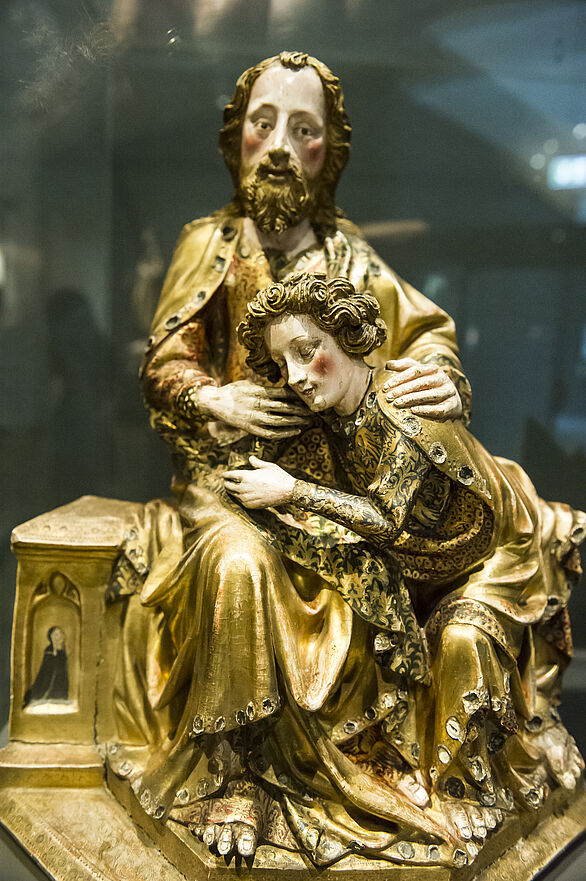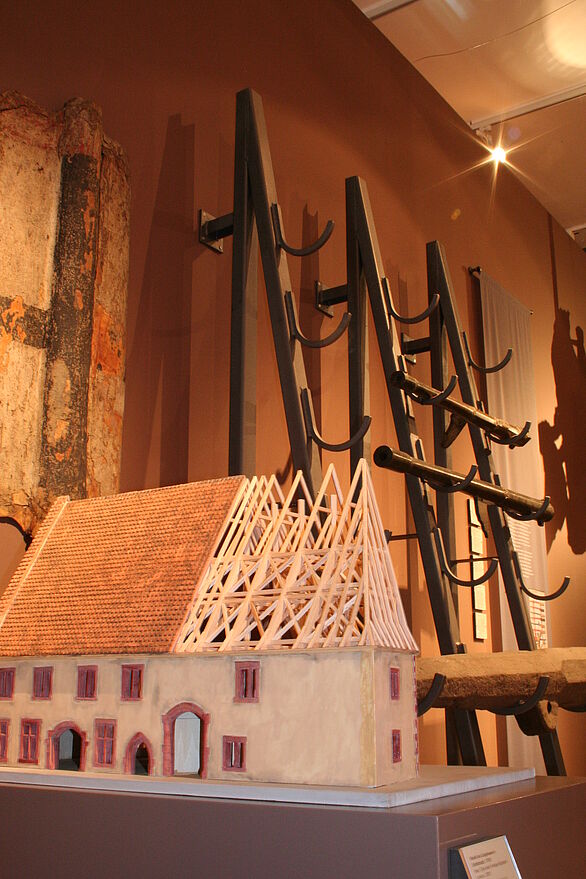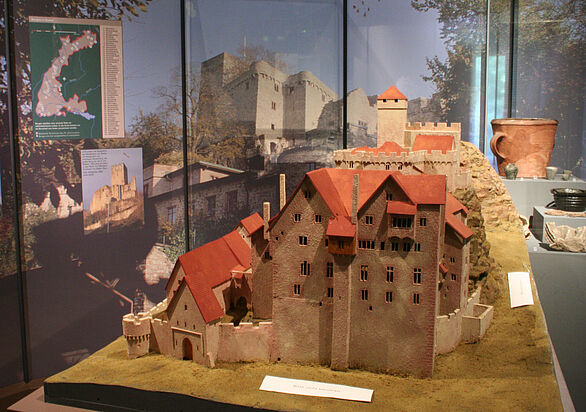© Badisches Landesmuseum
Middle Ages
Brief description
The exhibition makes the Middle Ages in the Upper Rhine region come to life. All around the true-to-life model of the once powerful Hohenbaden fortress, the ancestral castle of the margraves of Baden, historical weaponry, armaments, and goblets display courtly chivalrous culture.
Special features
The small “Schwarzacher Köpfchen” (little head of Schwarzach) is the oldest example of figurative glass painting in the Western World.
Everyday life is in focus in the “Life in the city” area. Here, visitors can look into the workshops of artisans, blacksmiths, potters, glass painters, crystal grinders and construction workers. A separate area introduces them to the secrets of the era’s painters, who brought carved sculptures to life with their colours and gilding. The original common room of a half-timbered house, moved into the museum, gives a glimpse into home life at the time.
The intricate recreation of a church interior helps present sacred art. This includes ritual objects used in church services, as well as mystical devotional icons. The religious worldview of the time, which oscillated between a fear of hell and the hope of the afterlife, is embodied by the wooden figure of death wearing a monk's cowl.
Picture gallery











© Badisches Landesmuseum, Foto: Schoenen
© Badisches Landesmuseum
© Badisches Landesmuseum
© Badisches Landesmuseum, Foto: Schoenen
© Badisches Landesmuseum
© Badisches Landesmuseum
Collection "Mittelalter", Badisches Landesmuseum, Foto: Goldschmidt
© Badisches Landesmuseum
© Badisches Landesmuseum, Foto: Schoenen
© Badisches Landesmuseum, Foto: Schoenen
© Badisches Landesmuseum, Foto: Schoenen